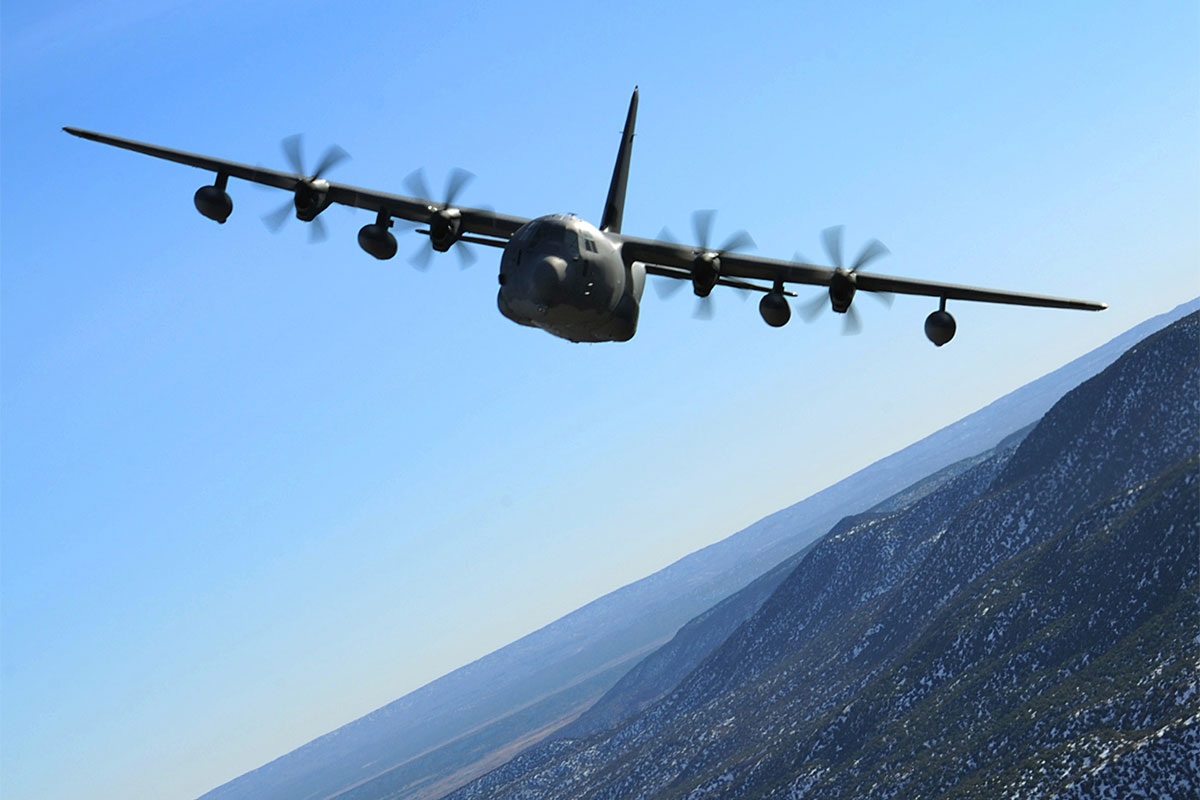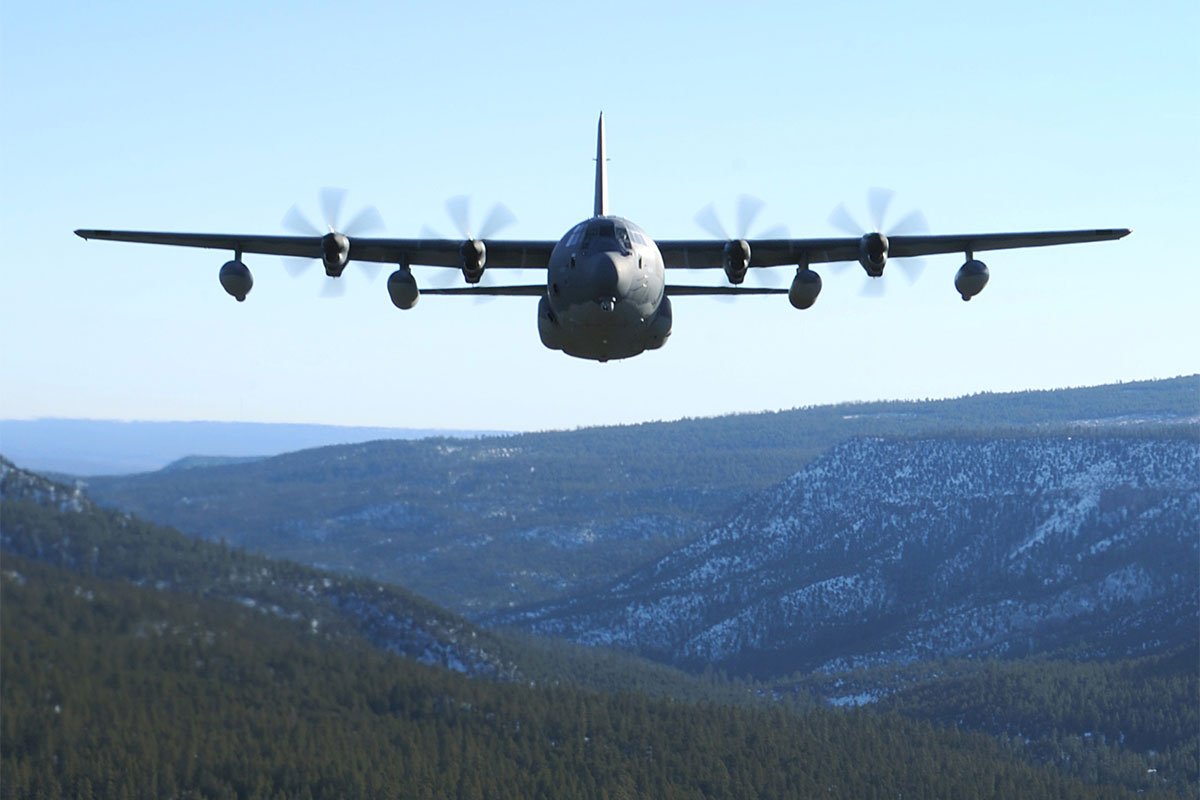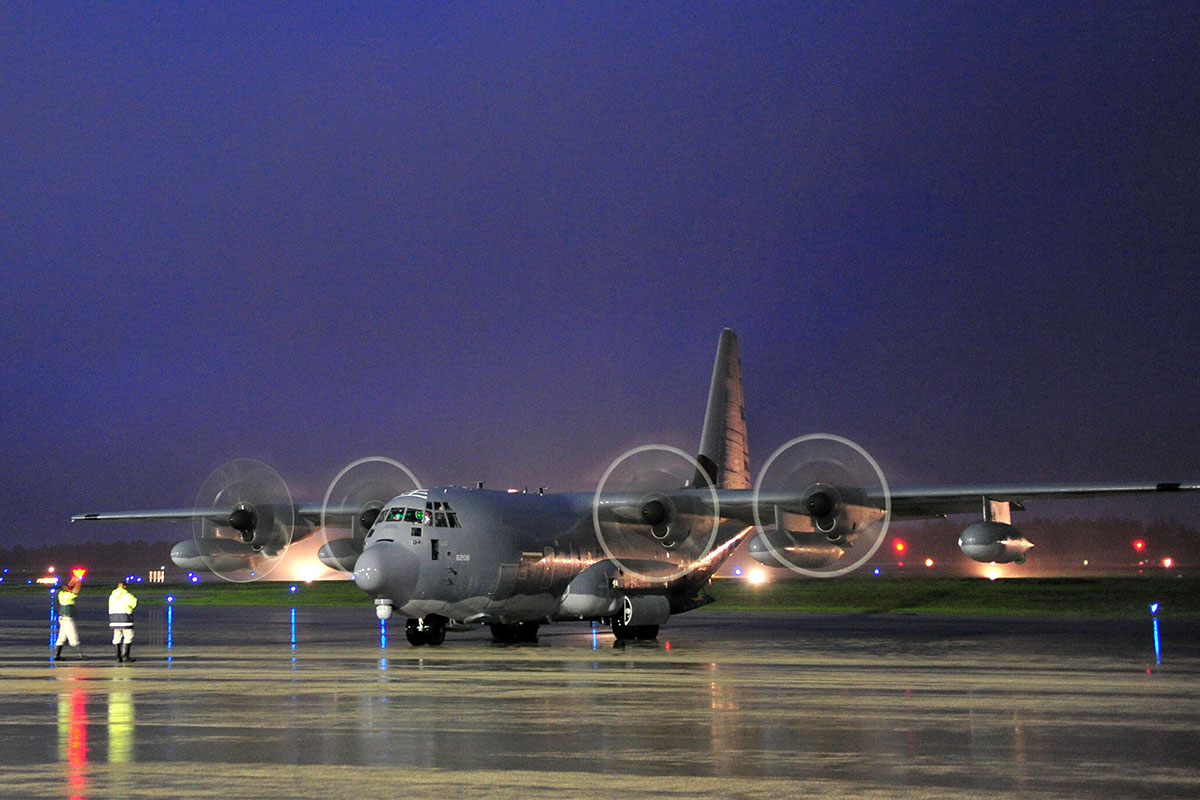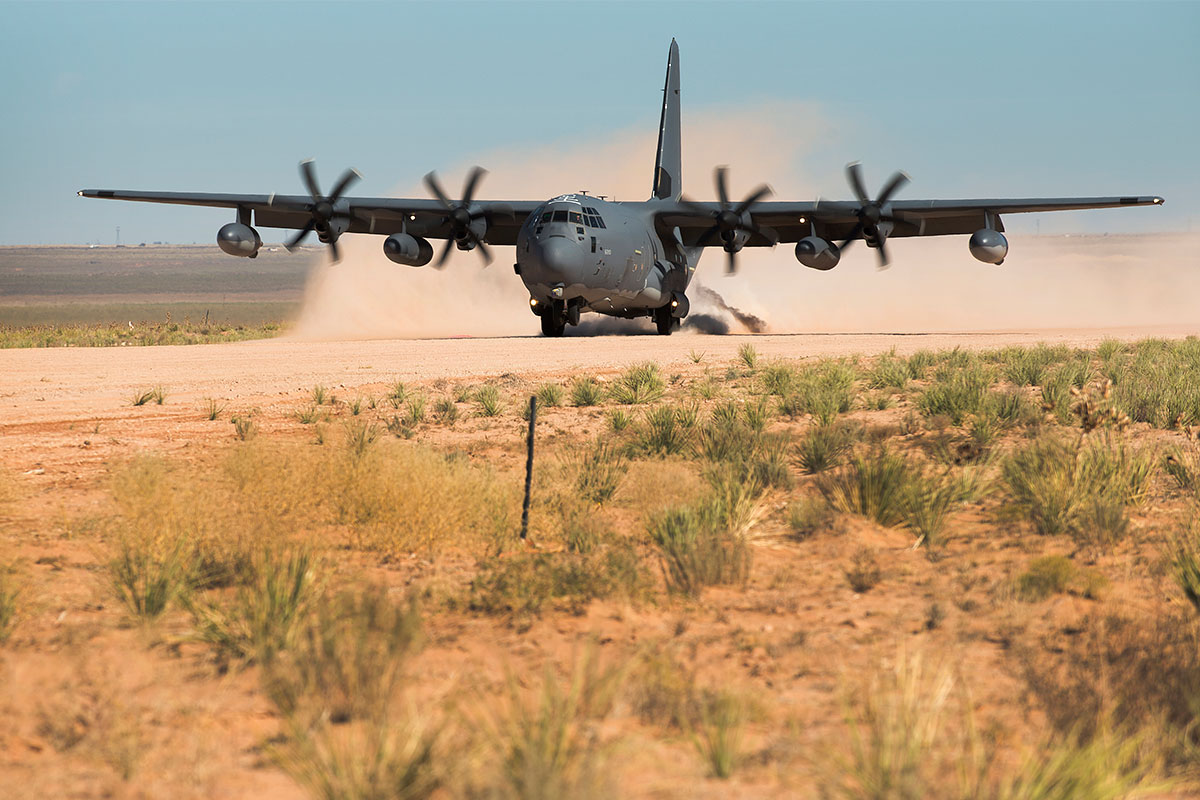Builder: Lockheed Martin
Services: United States Air Force
Power Plant: 4 Rolls-Royce AE 2100D3 Turboprops
Speed: 362 kts
Maximum Takeoff Weight: 164,000 pounds
Range: 3,000 miles unrefueled
Crew: Two pilots, one combat systems officer (officers), and two loadmasters (enlisted)
The MC-130J Commando II is intended to replace the aging MC-130E and P-model aerial refueling aircraft. The Commando II flies clandestine, or low visibility, single or multi-ship low-level air refueling missions for special operations helicopters and tilt-rotor aircraft, and infiltration, exfiltration, and resupply of special operations forces (SOF) by airdrop or airland intruding politically sensitive or hostile territories. The MC-130J primarily flies missions at night to reduce probability of visual acquisition and intercept by airborne threats. Its secondary mission includes the airdrop of leaflets.
The MC-130J includes an advanced two-pilot flight station with fully integrated digital avionics; fully populated Combat Systems Operator and auxiliary flight deck stations; 13 color multifunctional liquid crystal displays; head-up displays; fully integrated navigation systems with dual inertial navigation system and global positioning system; integrated defensive systems; low-power color radar; digital moving map display; new turboprop engines with six-bladed, all-composite propellers; digital autopilot; improved fuel, environmental and ice-protection systems; enhanced cargo-handling system; Universal Air Refueling Receptacle Slipway Installation (UARRSI), air refueling pods, Electro Optical/Infrared (EO/IR) System; dual SATCOM for voice/data; 60/90 KVA generators; increased DC electrical output, loadmaster/scanner restraint system; and LAIRCM provisions.
The MC-130J is replacing the aging SOF fleet of 37 MC-130E and P tankers. The first aircraft was delivered in September 2011 to Cannon Air Force Base, N.M., with final delivery expected in fiscal 2017. The aircraft was officially renamed Commando II from Combat Shadow II in March 2012.
















